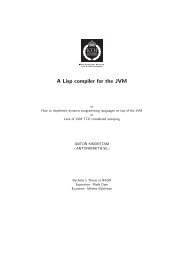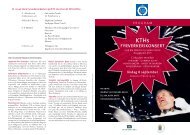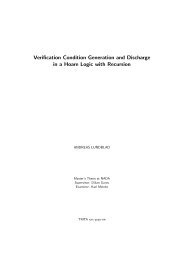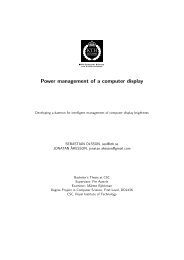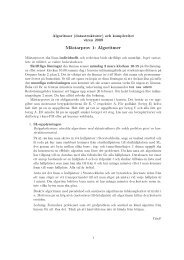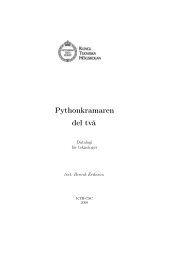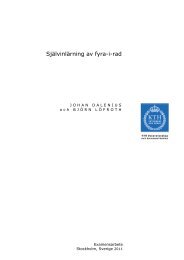Dr Faustus of Modern Physics - Department of Speech, Music and ...
Dr Faustus of Modern Physics - Department of Speech, Music and ...
Dr Faustus of Modern Physics - Department of Speech, Music and ...
You also want an ePaper? Increase the reach of your titles
YUMPU automatically turns print PDFs into web optimized ePapers that Google loves.
Chapter 39<br />
Nobel Prize: Planck<br />
The Nobel Prize in <strong>Physics</strong> 1918 was awarded (in 1919) to Max Planck:<br />
• in recognition <strong>of</strong> the services he rendered to the advancement <strong>of</strong> <strong>Physics</strong> by<br />
his discovery <strong>of</strong> energy quanta.<br />
It took the Nobel Committee more than 10 years to come to this conclusion,<br />
because Planck’s new concept <strong>of</strong> a smallest quantum <strong>of</strong> energy was so difficult<br />
to swallow, described by the Swedish mathematician Ivar Fredholm as “hardly<br />
plausible”. In 1918 the Committee gave in under pressure to give the prize to Bohr<br />
<strong>and</strong> Einstein, which required a prize to Planck first. The presentation speech by<br />
Ekstr<strong>and</strong> stated:<br />
• Planck’s radiation theory is, in truth, the most significant lodestar for modern<br />
physical research, <strong>and</strong> it seems that it will be a long time before the<br />
treasures will be exhausted which have been unearthed as a result <strong>of</strong> Planck’s<br />
genius.<br />
• Planck’s formula contained two constants; one, as was demonstrated, gave<br />
the number <strong>of</strong> molecules in a gram molecule <strong>of</strong> matter. Planck was also the<br />
first to succeed in getting, by means <strong>of</strong> the said relation, a highly accurate<br />
value for the number in question, the so-called Avogadro constant.<br />
• The other constant, the so-called Planck constant, proved, as it turned out,<br />
to be <strong>of</strong> still greater significance, perhaps, than the first. The product hν,<br />
where ν is the frequency <strong>of</strong> vibration <strong>of</strong> a radiation, is actually the smallest<br />
amount <strong>of</strong> heat which can be radiated at the vibration frequency ν. This<br />
theoretical conclusion st<strong>and</strong>s in very sharp opposition to our earlier concept<br />
<strong>of</strong> the radiation phenomenon.<br />
183




